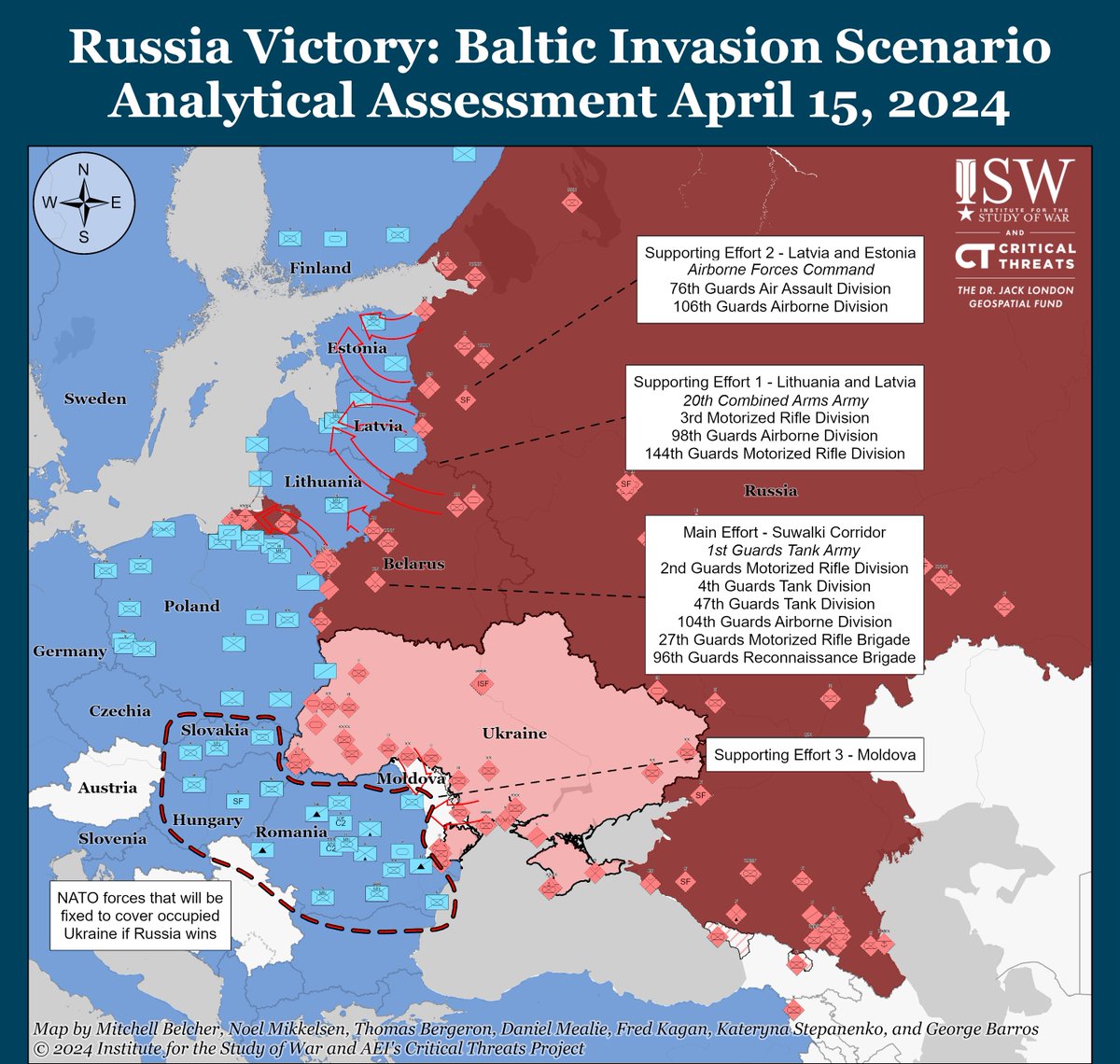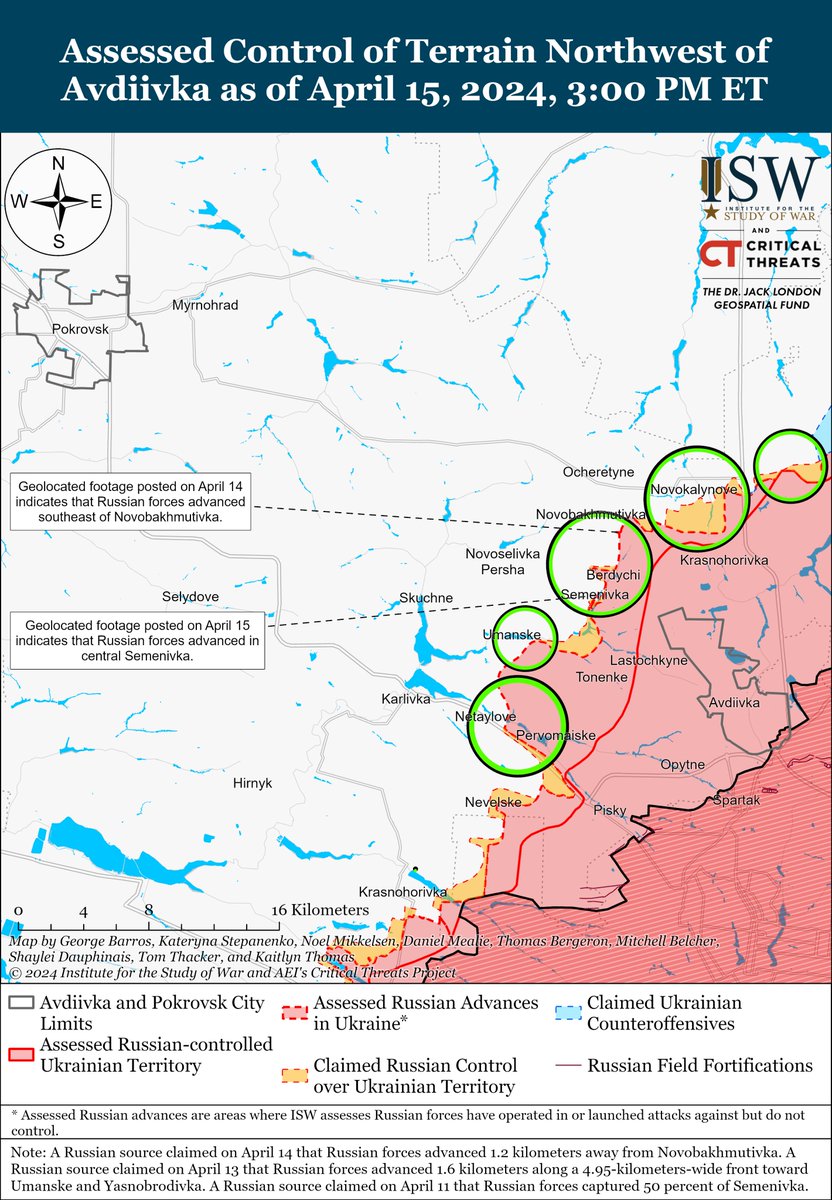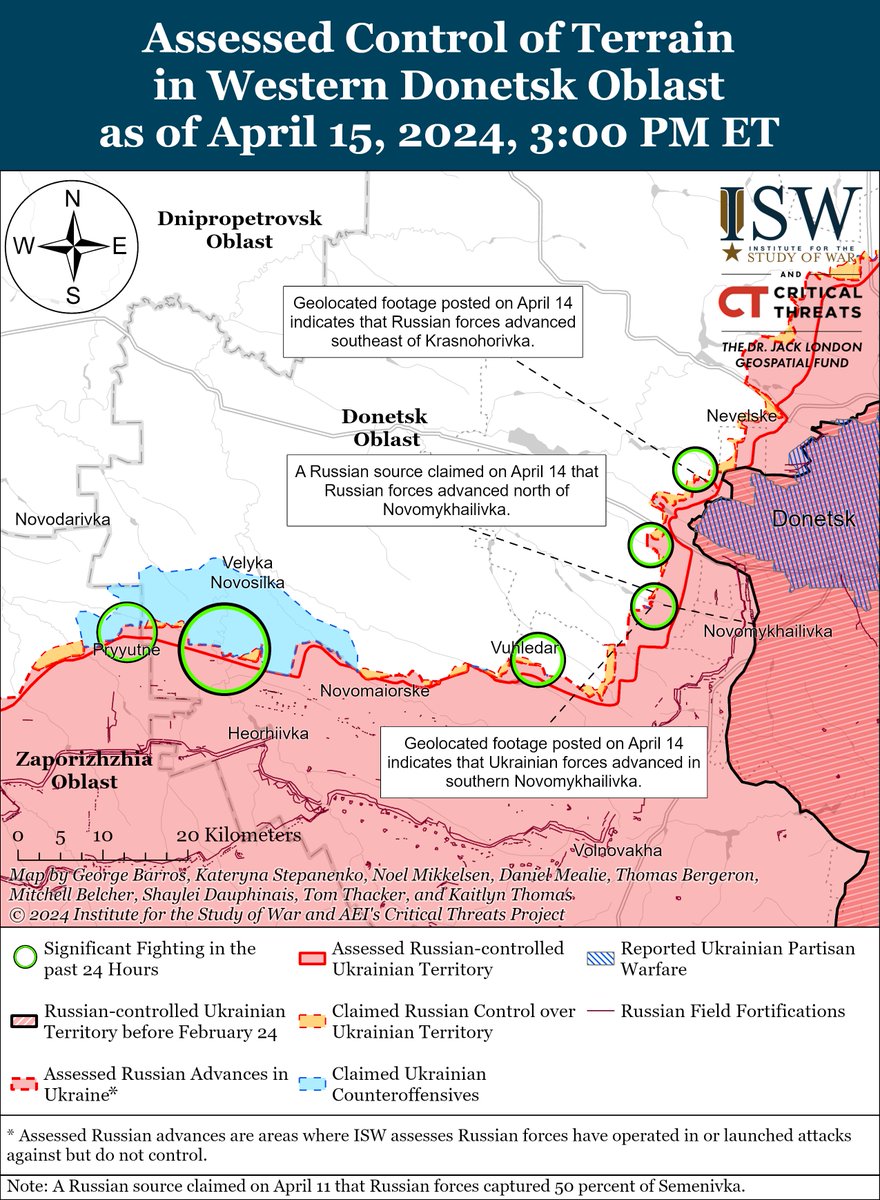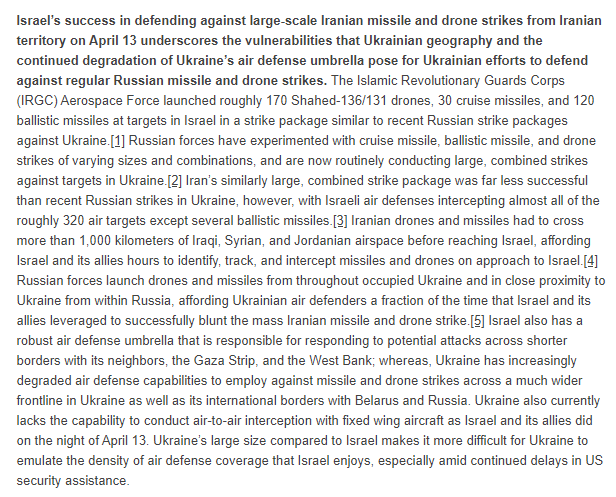NEW | The Iranian April 13 missile-drone attack on Israel was very likely intended to cause significant damage below the threshold that would trigger a massive Israeli response. The attack was designed to succeed, not to fail. 🧵(1/9)
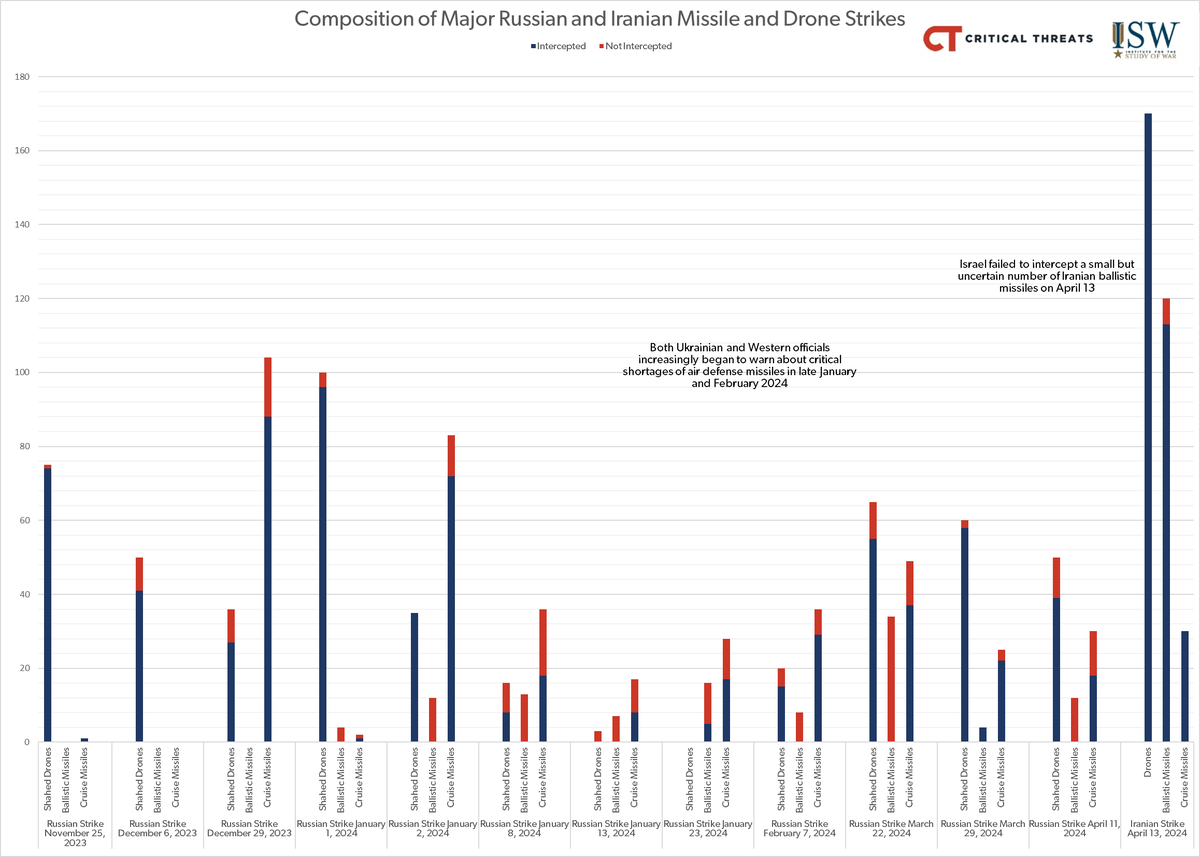
2/ The strike package was modeled on those the Russians have used repeatedly against Ukraine to great effect.
The strike consisted of approximately 170 drones, 30 cruise missiles, and 120 ballistic missiles.
The strike consisted of approximately 170 drones, 30 cruise missiles, and 120 ballistic missiles.
3/ The drones were launched well before the ballistic missiles were fired, very likely in the expectation that they would arrive in Israel’s air defense window at about the same time as the cruise missiles and drones.
4/ The Russians have used such an approach against Ukraine repeatedly.
Only a few ballistic missiles penetrated Israeli air defenses and struck near Israeli military bases out of the 120 or so the Iranians fired.
Only a few ballistic missiles penetrated Israeli air defenses and struck near Israeli military bases out of the 120 or so the Iranians fired.
5/ Ukrainian air defenses have averaged interception rates of only about 46% of Russian ballistic missiles during recent large strikes.
6/ The Iranians likely expected that Israeli rates would be higher than the Ukrainian rates but not above 90% against such a large ballistic missile salvo—the Russians, after all, have never fired close to that many large ballistic missiles in a single strike against Ukraine.
7/ Israel’s air defense system has several obvious advantages over Ukrainian air defense, but the full implications of some of those advantages might well have been unclear to Iranian strike planners.
8/ Ukraine has, in particular, been unable to use combat aircraft to shoot down Russian drones and cruise missiles at scale, and Ukrainian President Volodymyr Zelensky recently observed that Kyiv will likely use the F-16s Ukraine will receive this summer in those roles.
9/ Iran will learn additional lessons from the failed attack that it can leverage to launch more successful attacks in the future.
Special Report w/ @criticalthreats: Iran’s Attempt to Hit Israel with a Russian-Style Strike Package Failed...for Now: isw.pub/IranSpecial041…
Special Report w/ @criticalthreats: Iran’s Attempt to Hit Israel with a Russian-Style Strike Package Failed...for Now: isw.pub/IranSpecial041…

• • •
Missing some Tweet in this thread? You can try to
force a refresh


